
Slieve League: Ireland's Majestic Cliffs
Discover the awe-inspiring Slieve League cliffs in Ireland, where adventure meets tranquility and nature's grandeur offers an unforgettable experience.
Slieve League, located in County Donegal, Ireland, is home to some of the highest sea cliffs in Europe. Rising nearly 600 meters above the Atlantic Ocean, these cliffs offer breathtaking views and an unforgettable experience for nature lovers and adventure seekers alike. Unlike the more famous Cliffs of Moher, Slieve League is less commercialized, providing a more rugged and authentic Irish coastal experience. The cliffs can be explored through a variety of hiking trails, each offering unique vantage points and photo opportunities. The most popular route is the Pilgrim's Path, which leads you through scenic landscapes dotted with wildflowers and ancient ruins. For those seeking a less strenuous visit, there is a viewing platform near the parking lot that still provides stunning panoramic views. Aside from the natural beauty, Slieve League is steeped in local history and folklore. Legend has it that the cliffs were used as a place of religious pilgrimage for centuries. Today, visitors can still feel the spiritual significance of the area, especially at the ancient stone ruins scattered throughout the trails. Don't forget to stop by the nearby visitor center to learn more about the local culture and history.
Local tips in Slieve League
- Wear sturdy hiking boots; the trails can be steep and rocky.
- Check the weather forecast; fog can obscure views and make hiking unsafe.
- Bring a camera with a good zoom; you'll want to capture the stunning vistas.
- Visit the nearby visitor center for maps and local insights.
- Consider hiring a local guide to learn about the area's history and folklore.
Slieve League: Ireland's Majestic Cliffs
Slieve League, located in County Donegal, Ireland, is home to some of the highest sea cliffs in Europe. Rising nearly 600 meters above the Atlantic Ocean, these cliffs offer breathtaking views and an unforgettable experience for nature lovers and adventure seekers alike. Unlike the more famous Cliffs of Moher, Slieve League is less commercialized, providing a more rugged and authentic Irish coastal experience. The cliffs can be explored through a variety of hiking trails, each offering unique vantage points and photo opportunities. The most popular route is the Pilgrim's Path, which leads you through scenic landscapes dotted with wildflowers and ancient ruins. For those seeking a less strenuous visit, there is a viewing platform near the parking lot that still provides stunning panoramic views. Aside from the natural beauty, Slieve League is steeped in local history and folklore. Legend has it that the cliffs were used as a place of religious pilgrimage for centuries. Today, visitors can still feel the spiritual significance of the area, especially at the ancient stone ruins scattered throughout the trails. Don't forget to stop by the nearby visitor center to learn more about the local culture and history.
When is the best time to go to Slieve League?
Iconic landmarks you can’t miss
Ireland
Explore the enchanting landscapes, rich culture, and vibrant cities of Ireland, a must-visit destination for every traveler seeking adventure and history.
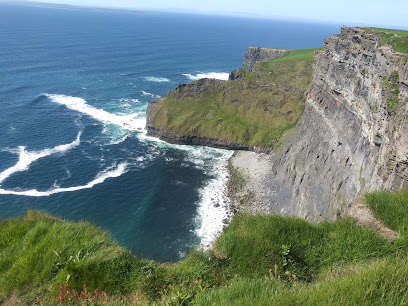
Lough Eske Castle
Experience the enchanting blend of history and luxury at Lough Eske Castle, an exquisite hotel set in the stunning landscapes of County Donegal.

Sliabh Liag Viewing Platform
Experience the breathtaking cliffs and panoramic views at Sliabh Liag Viewing Platform, a must-visit scenic spot in County Donegal, Ireland.

Assaranca Waterfall (Eas a' Ranca)
Experience the breathtaking beauty of Assaranca Waterfall in County Donegal, Ireland - a serene escape into the heart of nature.

Glencolumbkille Folk Village
Explore the rich heritage of Ireland at Glencolumbkille Folk Village—an enchanting journey through time in County Donegal.
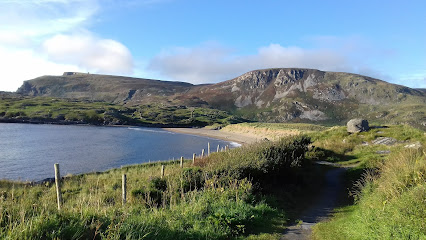
Slieve League Car Park
Explore the breathtaking beauty of Slieve League Car Park, your starting point for Ireland's spectacular sea cliffs and scenic hiking trails.
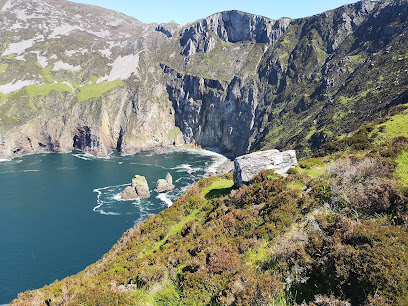
Sliabh Liag Cliff Experience & Visitor Centre
Explore the stunning Sliabh Liag cliffs at the Visitor Centre, your gateway to Ireland's natural beauty and rich cultural heritage.
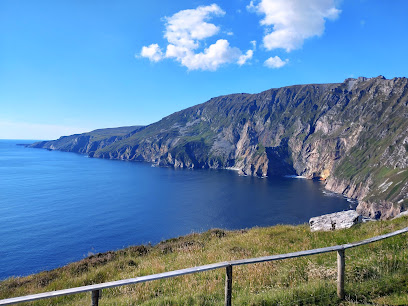
Sliabh Liag Boat Trips
Discover the breathtaking beauty of Sliabh Liag cliffs with unforgettable boat trips from Teelin Harbour in County Donegal, Ireland.

Bunglass Point
Explore the stunning cliffs and coastal views at Bunglass Point, a breathtaking hidden gem in County Donegal, Ireland.
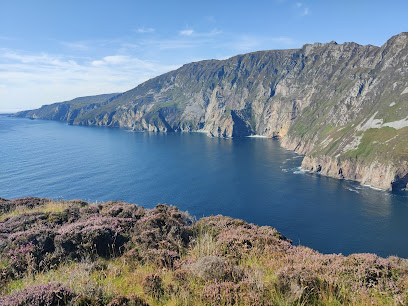
Sliabh Liag
Experience the breathtaking beauty of Sliabh Liag, home to Ireland's highest sea cliffs, where nature and adventure await every traveler.
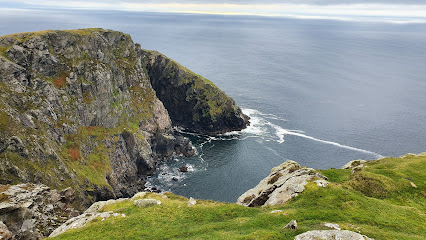
Sliabh Liag Walk
Discover the breathtaking views and rich history of Sliabh Liag Walk, one of Ireland's highest sea cliffs, nestled in the stunning County Donegal.

The Pilgrim Path
Explore the breathtaking landscapes of The Pilgrim Path in County Donegal, a hiking gem rich in history and natural beauty.
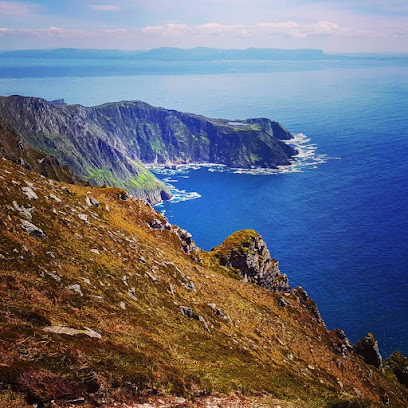
Sliabh Liag Tours
Explore the stunning cliffs of Sliabh Liag with Sliabh Liag Tours, where breathtaking landscapes and rich culture come together in a perfect Irish adventure.
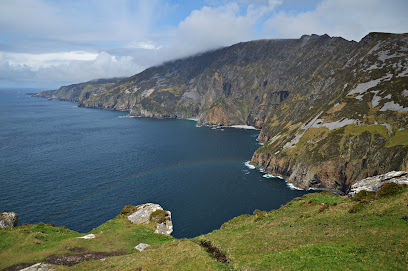
Slieve League View Walk
Discover the unparalleled beauty of Slieve League View Walk in County Donegal, where dramatic cliffs meet the Atlantic in a breathtaking display of nature.
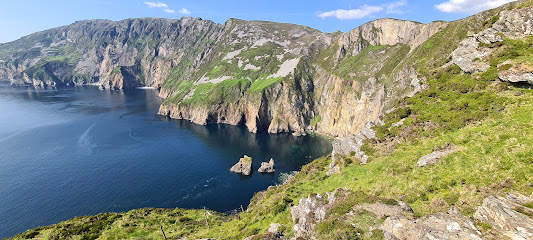
Slieve League Cliffs Centre
Discover the breathtaking Slieve League Cliffs, one of Europe's highest sea cliffs, offering stunning views and unforgettable hiking experiences in Donegal.
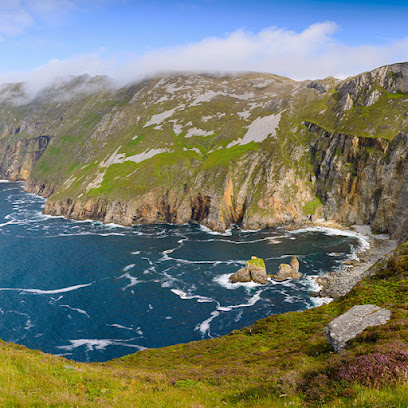
Unmissable attractions to see
Sliabh Liag Viewing Platform
Discover the breathtaking cliffs of Sliabh Liag in County Donegal, Ireland - where nature's grandeur meets rich history and stunning views.
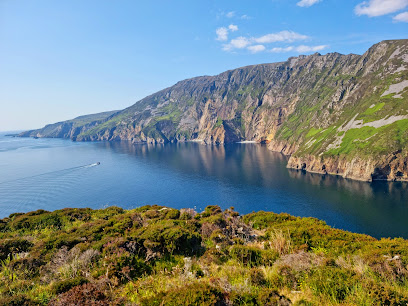
Assaranca Waterfall (Eas a' Ranca)
Experience the breathtaking beauty of Assaranca Waterfall in Co. Donegal, a must-visit destination for nature lovers and adventurers.

Fairy Bridges
Experience the breathtaking beauty of Fairy Bridges in Bundoran, County Donegal, where nature meets folklore along the stunning Atlantic coastline.

Glenveagh Castle
Discover the enchanting Glenveagh Castle, a stunning historical site nestled within the breathtaking landscapes of Donegal's national park.
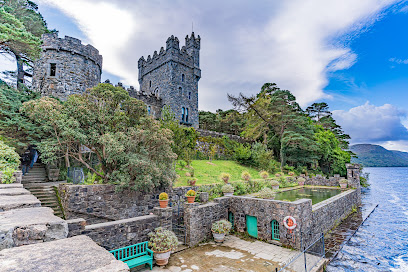
Glencolumbkille Folk Village
Discover the cultural heritage and charm of Glencolumbkille Folk Village in Donegal, a unique window into Ireland's past.
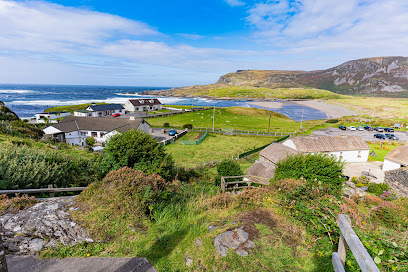
Largy Viewpoint
Discover the stunning vistas of Largy Viewpoint, where the rugged Irish coastline meets the Atlantic Ocean in breathtaking harmony.

Sliabh Liag Cliff Experience & Visitor Centre
Discover the breathtaking views and rich heritage at Sliabh Liag Cliff Experience & Visitor Centre, a top tourist attraction in County Donegal, Ireland.
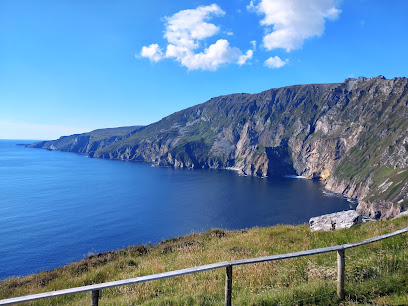
Donegal Bay Waterbus
Discover the stunning beauty of Donegal Bay on the Donegal Bay Waterbus, an unforgettable boat tour showcasing nature and history.
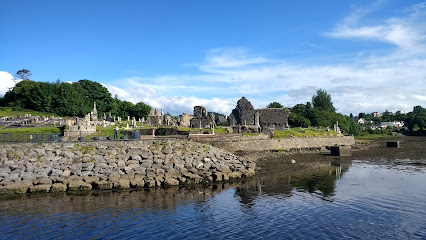
Caves of Maghera
Explore the stunning Caves of Maghera, a hidden gem in Donegal, where nature's artistry meets breathtaking coastal views.
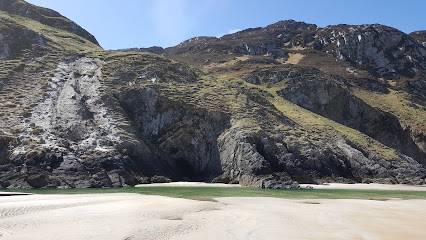
Secret Waterfall
Discover the breathtaking Secret Waterfall in County Donegal, a hidden gem surrounded by nature's beauty and rugged cliffs.
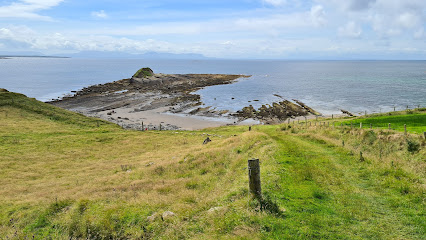
St John's Point Beach
Discover the serene beauty of St John's Point Beach in Co. Donegal, where golden sands meet breathtaking cliffs along the Wild Atlantic Way.
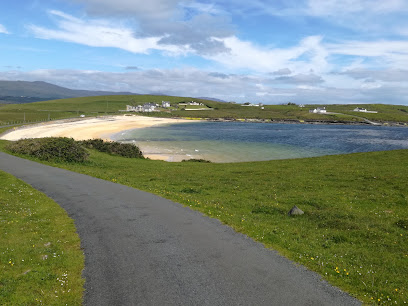
Sliabh Liag Boat Trips
Discover the stunning Sliabh Liag cliffs on an unforgettable boat tour, showcasing the breathtaking beauty of Donegal's coastline.
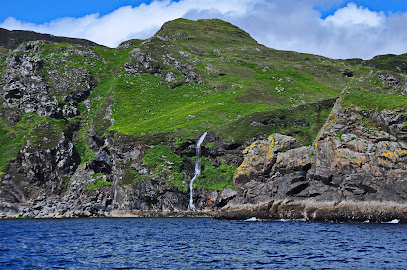
Bunglass Point
Explore the breathtaking views of Bunglass Point in Co. Donegal, a scenic spot that showcases Ireland's rugged coastal beauty.
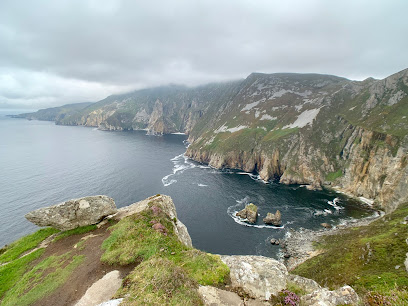
Sliabh Liag
Explore Sliabh Liag: Ireland's breathtaking cliffs and hiking trails offer stunning views and a connection to nature's raw beauty.
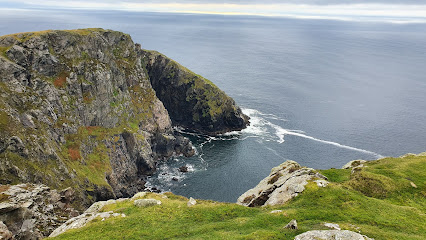
Sliabh Liag Walk
Experience the breathtaking beauty of Sliabh Liag Walk in Donegal, where stunning cliffs meet the Atlantic Ocean in a spectacular natural setting.
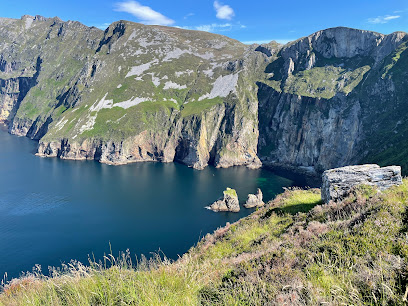
Essential places to dine
Tara Hotel
Experience comfort and authentic Irish cuisine at Tara Hotel in Killybegs - your gateway to exploring Donegal's breathtaking beauty.
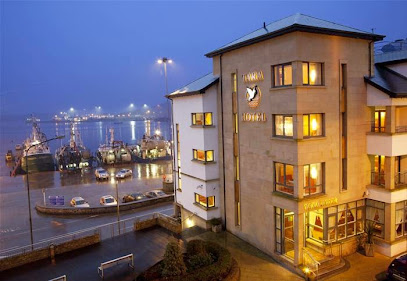
Killybegs seafood shack
Experience the freshest seafood in Donegal at Killybegs Seafood Shack – where local flavors meet culinary excellence.
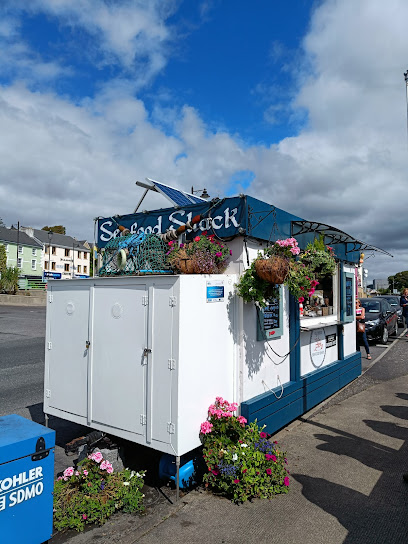
Smugglers Creek Inn
Discover culinary delights and cozy accommodations at Smugglers Creek Inn in beautiful Rossnowlagh, County Donegal.
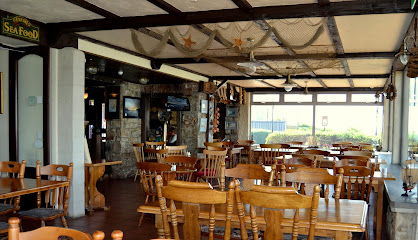
Nancy's
Discover authentic Irish flavors at Nancy's in Ardara – where every dish tells a story from County Donegal.
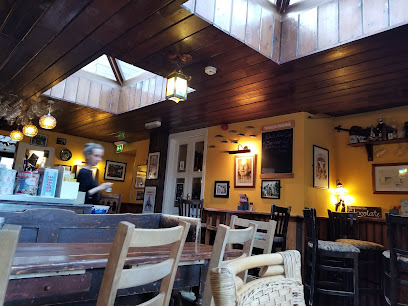
Ahoy Cafe
Discover the charm of Ahoy Cafe in Killybegs - where delicious food meets stunning coastal views.
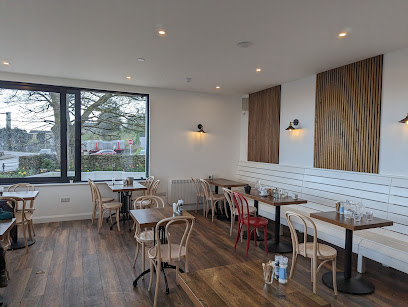
Charlie's West End Cafe
Discover authentic Irish cuisine at Charlie's West End Cafe in Drumbaran - where every meal feels like home.
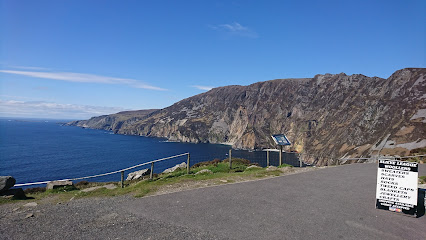
Mrs B's Coffee House
Discover the warmth and flavors of Donegal at Mrs B's Coffee House - where every cup tells a story.
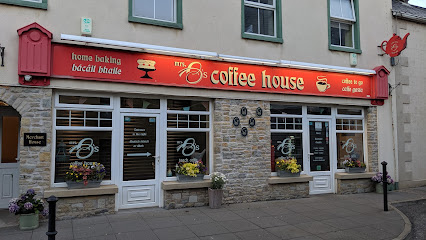
Blas
Discover authentic Irish cuisine at Blas Bistro in Donegal, where local flavors meet warm hospitality.
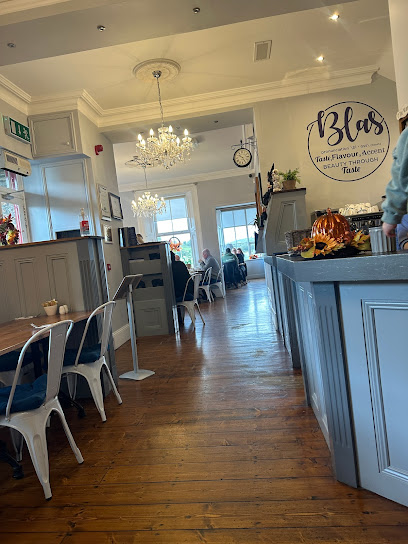
The Fleet Inn Guesthouse & Restaurant
Experience authentic Irish hospitality at The Fleet Inn Guesthouse & Restaurant in Killybegs – where great food meets stunning coastal views.
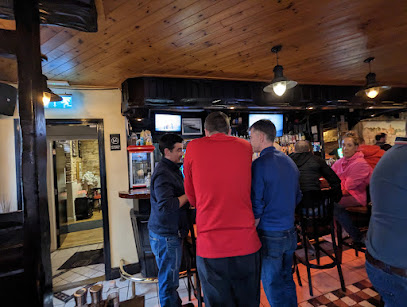
Quay West Restaurant Donegal Town
Discover delicious local flavors at Quay West Restaurant in Donegal Town, where every dish tells a story of Ireland's rich culinary heritage.
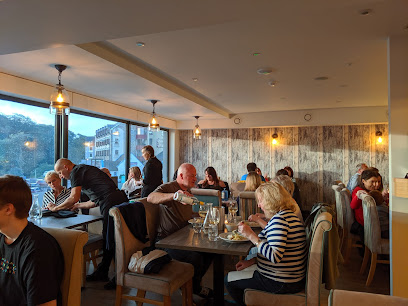
Andersons Boathouse Restaurant And Accommodation
Experience authentic Irish cuisine at Andersons Boathouse Restaurant in Killybegs - where local flavors meet breathtaking views.
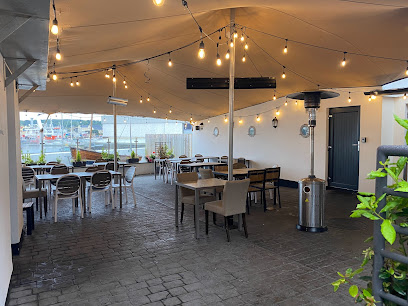
Market House Restaurant
Discover the culinary delights of Market House Restaurant in Donegal - where local ingredients meet exquisite flavors in an inviting atmosphere.
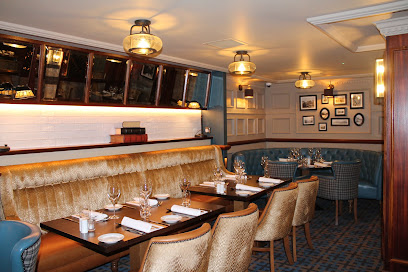
Mickalene's
Discover the culinary delights at Mickalene's in Ardara, Co. Donegal—where local flavors meet exceptional hospitality.
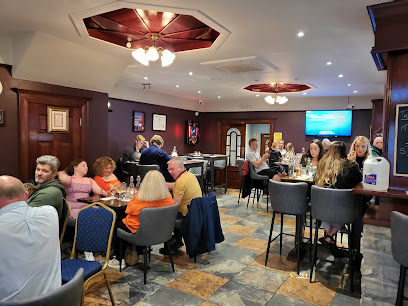
The Marina Cafe
Discover delicious seafood at The Marina Cafe in Killybegs – where fresh catches meet stunning harbor views.
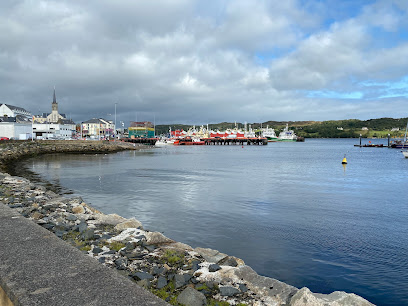
The Salmon Inn
Discover The Salmon Inn in Co. Donegal - where local flavors meet warm Irish hospitality in a stunning setting.
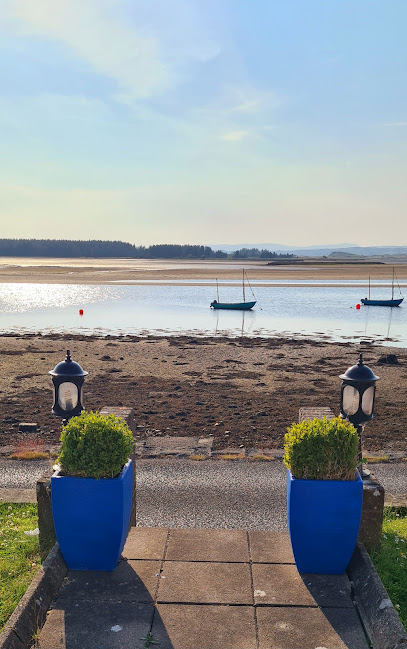
Markets, malls and hidden boutiques
Sliabh Liag Viewing Platform
Experience breathtaking views and rich history at Sliabh Liag Viewing Platform, one of Ireland's most stunning scenic spots.
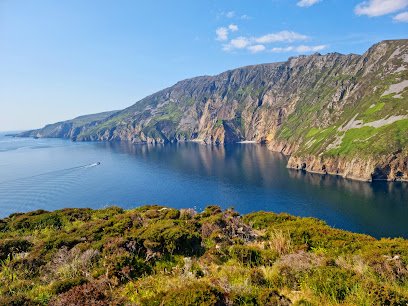
Sliabh Liag Cliff Experience & Visitor Centre
Explore the breathtaking Sliabh Liag cliffs and immerse yourself in the natural beauty and rich culture of Donegal at our Visitor Centre.
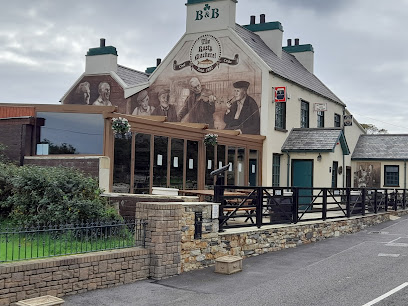
Tí Linn Cafe
Discover Tí Linn Cafe in County Donegal, where stunning views meet delicious food and local craftsmanship.
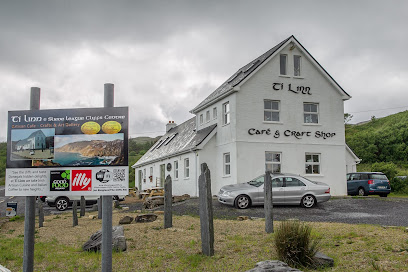
Triona Donegal Tweed Center
Experience authentic Donegal craftsmanship at Triona Donegal Tweed Center, a must-visit for lovers of traditional Irish textiles and culture.
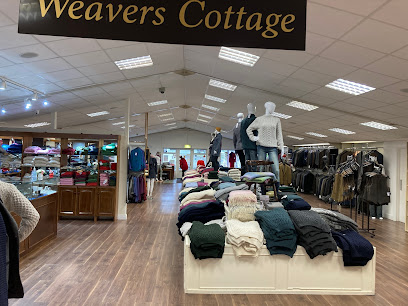
Magee of Donegal
Explore Magee of Donegal, where Irish craftsmanship meets contemporary style in a unique shopping experience.
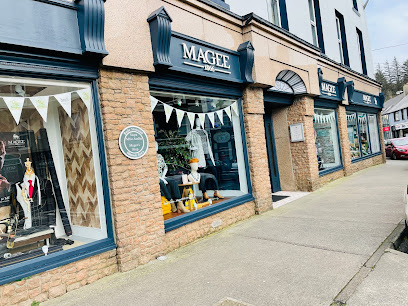
Donegal Craft Village
Explore Donegal Craft Village: A unique destination for handcrafted gifts and local artistry in the heart of Ireland's scenic countryside.
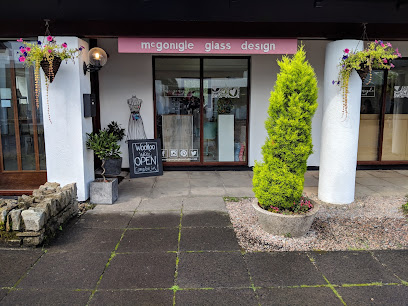
Brew In Thru (Barista Coffee Vintage Van)
Discover Brew In Thru, a vintage coffee van nestled in the stunning Slieve League, offering exquisite brews amidst breathtaking Donegal landscapes.
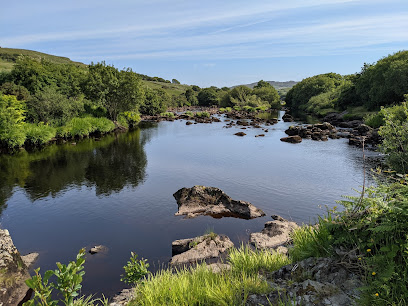
Byrne's Foodstore & Filling Station
Discover the charm of Byrne's Foodstore & Filling Station in Glencolumbkille, a must-visit supermarket for local delights and essential supplies.
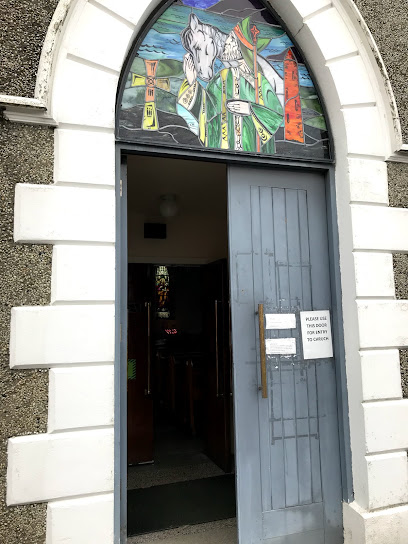
Rossan Knitwear
Discover the beauty of Donegal wool at Rossan Knitwear, where tradition meets modern craftsmanship in the heart of Glencolumbkille.
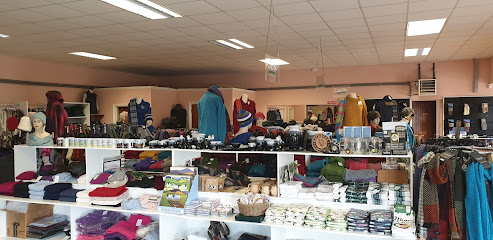
Cyndi Graham Handweaving studio
Explore Cyndi Graham Handweaving Studio in Dunkineely, Co. Donegal for exquisite handwoven textiles and a unique crafting experience.
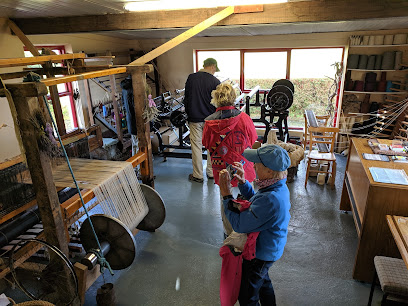
Studio Donegal
Experience the rich heritage of Irish craftsmanship at Studio Donegal, a premier weaving mill in scenic Kilcar, Co. Donegal.
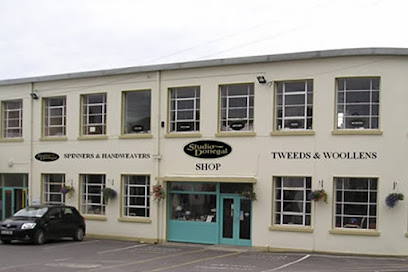
Doherty's XL
Explore the flavors of Donegal at Doherty's XL, where local produce meets friendly service in a charming grocery store experience.
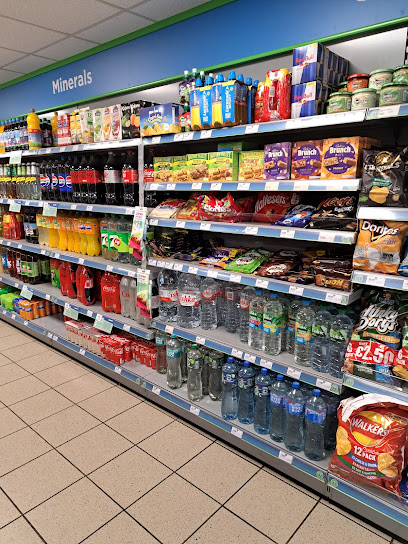
Triona
Explore Triona in Donegal for unique Irish gifts, clothing, and jewelry, capturing the essence of local craftsmanship and culture.
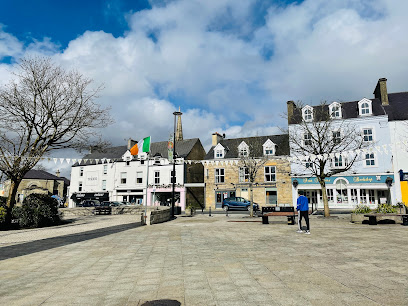
The Parlour Shop
Explore unique second-hand furniture and decor at The Parlour Shop in Killybegs, Co. Donegal, where every piece has a story to tell.
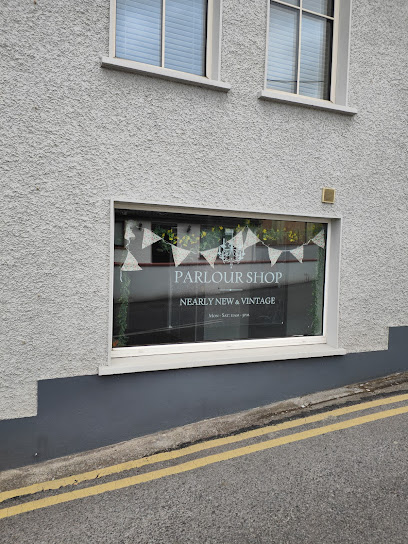
Mc Ginleys
Explore the unique charm of Mc Ginleys, Killybegs' premier department store for local goods, crafts, and memorable souvenirs.
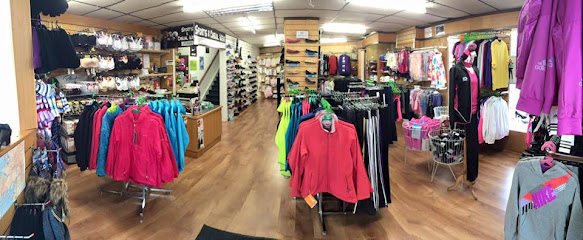
Essential bars & hidden hideouts
The Rusty Mackerel
Experience authentic Irish hospitality at The Rusty Mackerel, a charming pub in Carrick, Donegal, known for its cozy atmosphere and delicious local fare.
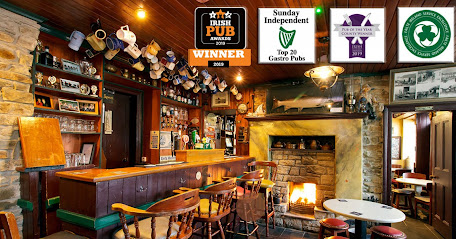
Olde Castle Seafood Bar
Experience the essence of Donegal's coastal cuisine at Olde Castle Seafood Bar, where fresh seafood meets warm hospitality.
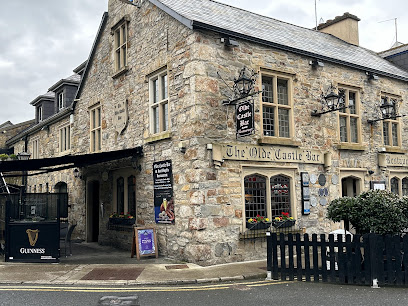
The Olde Glen Bar, Restaurant & Bia Box
Experience the charm of The Olde Glen Bar in Donegal, where traditional Irish hospitality meets modern dining delight.
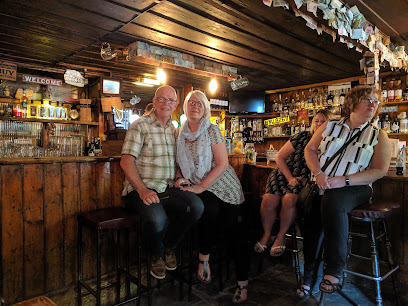
McCafferty's Bar, Donegal Town
Discover McCafferty's Bar in Donegal Town - a vibrant hub of Irish culture, great drinks, and warm hospitality awaits you!
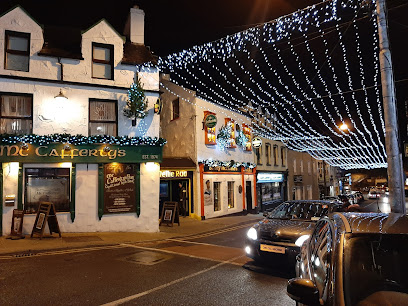
The Reel Inn
Discover the charm of The Reel Inn in Donegal, where fresh seafood meets breathtaking coastal views in a warm and inviting atmosphere.
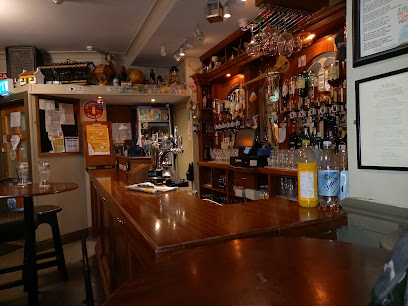
The Fleet Inn Guesthouse & Restaurant
Discover the heart of Killybegs at The Fleet Inn Guesthouse & Restaurant, where exceptional grill cuisine meets warm Irish hospitality.
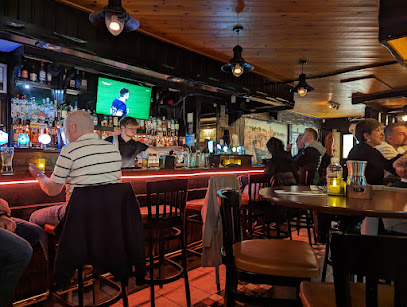
The Reveller Bar
Experience the heart of Donegal at The Reveller Bar, where live music, local brews, and authentic Irish hospitality come together in perfect harmony.
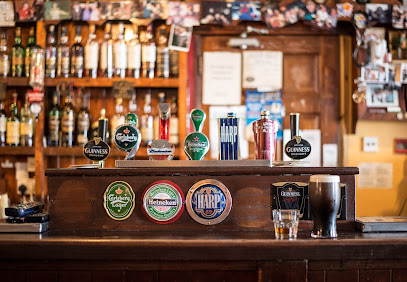
John Joe's Bar
Discover the lively heart of Kilcar at John Joe's Bar, where live music and authentic Irish culture come together in an inviting atmosphere.
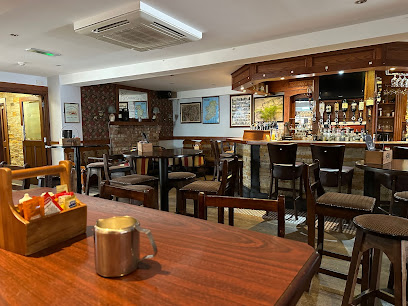
Kelly's Kitchen (at Slieve League Lodge)
Experience the charm of Kelly's Kitchen at Slieve League Lodge, where local flavors meet breathtaking views in the heart of Donegal.
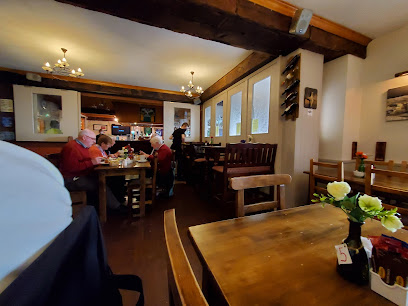
Roartys Bar & Accomodation
Experience the warmth and charm of Roartys Bar & Accommodation in Glencolumbkille, your ideal spot for local brews and hearty meals.
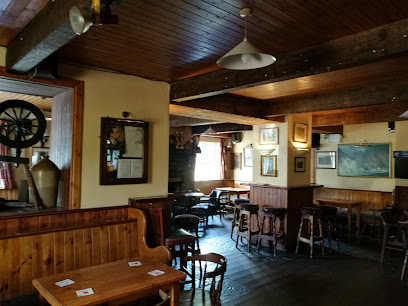
Doherty's Bar
Experience the heart of Irish culture at Doherty's Bar in Hillhead, Co. Donegal, where warm hospitality meets vibrant local music and delicious cuisine.
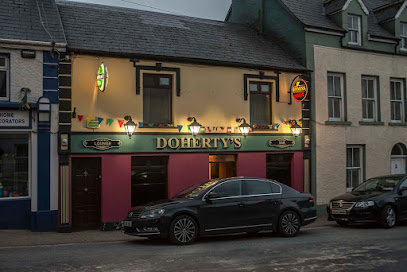
Harbour Bar
Experience authentic Irish hospitality at Harbour Bar, a cozy local bar in Killybegs with a great selection of drinks and live music.

The Beehive Pub
Discover the warmth and charm of The Beehive Pub in Co. Donegal - a perfect blend of local flavors, live music, and Irish hospitality.
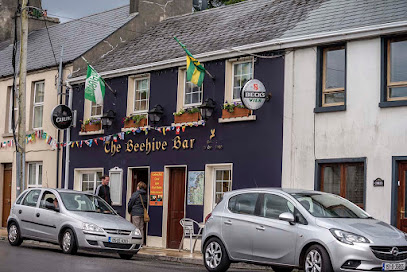
Glen Head Tavern
Discover the charm of Glen Head Tavern, where local brews and hearty Irish fare meet genuine hospitality in the heart of Donegal.

Evelyn's Central Bar
Discover the warm hospitality and vibrant atmosphere of Evelyn's Central Bar in County Donegal, the perfect spot for a cozy drink and local charm.
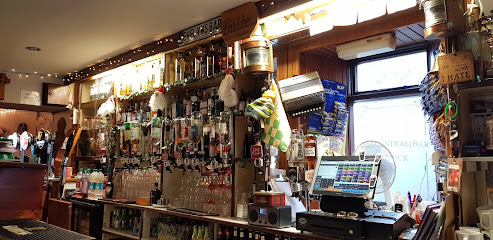
Local Phrases about Slieve League
-
- HelloDia dhuit
[dee-ah gwitch] - GoodbyeSlán
[slawn] - YesTá
[taw] - NoNíl
[neel] - Please/You're welcomeLe do thoil
[leh duh hull] - Thank youGo raibh maith agat
[guh rev mah a-gut] - Excuse me/SorryTá brón orm
[taw brohn urm] - How are you?Conas atá tú?
[kun-us ah-taw too] - Fine. And you?Tá mé go maith. Agus tú?
[taw may go my-uh. ah-gus too] - Do you speak English?An labhraíonn tú Béarla?
[ahn law-vreen too bayr-lah] - I don't understandNí thuigim
[nee hug-im]
- HelloDia dhuit
-
- I'd like to see the menu, pleaseBa mhaith liom an mianu a fheiceáil, le do thoil
[bah wah lyum on mee-uh-noo ah eck-awl, leh duh hull] - I don't eat meatNí ithim feoil
[nee ih-him foh-il] - Cheers!Sláinte!
[slawn-cheh] - I would like to pay, pleaseBa mhaith liom íoc, le do thoil
[bah wah lyum ee-uk, leh duh hull]
- I'd like to see the menu, pleaseBa mhaith liom an mianu a fheiceáil, le do thoil
-
- Help!Cabhraigh!
[kuhv-ree] - Go away!Imigh uaim!
[im-ee uhm] - Call the Police!Glan an Garda!
[glan on gahr-dah] - Call a doctor!Glan dochtúir!
[glan duhk-too-ir] - I'm lostTáim caillte
[taw-im kahl-cheh] - I'm illTáim tinn
[taw-im chin]
- Help!Cabhraigh!
-
- I'd like to buy...Ba mhaith liom ceannach...
[bah wah lyum can-ukh] - I'm just lookingNíl mé ach ag féachaint
[neel may uck egg fay-ukh-int] - How much is it?Cé mhéad atá air?
[kay vayd ah-taw air] - That's too expensiveTá sé ró-dháiríre
[taw shay roh-gaw-reh] - Can you lower the price?An féidir leat an praghas a laghdú?
[ahn fay-dur lat on prah-gus ah lah-goo]
- I'd like to buy...Ba mhaith liom ceannach...
-
- What time is it?Cén t-am é?
[kayn tahm ay] - It's one o'clockTá sé a haon
[taw shay ah hayn] - Half past (10)Leathuair tar éis a deich
[lah-hoo-ur tahr aysh ah deh] - MorningMaidin
[mah-din] - AfternoonTráthnóna
[traw-noh-nah] - EveningTráthnóna
[traw-noh-nah] - YesterdayInné
[in-ay] - TodayInniu
[in-you] - TomorrowAmárach
[ah-maw-rahk] - 1a haon
[ah hayn] - 2a dó
[ah doh] - 3a trí
[ah tree] - 4a ceathair
[ah kah-hir] - 5a cúig
[ah koo-ig] - 6a sé
[ah shay] - 7a seacht
[ah shakht] - 8a hocht
[ah hukht] - 9a naoi
[ah knee] - 10a deich
[ah deh]
- What time is it?Cén t-am é?
-
- Where's a/the...?Cá bhfuil an...?
[kaw will on] - What's the address?Cén seoladh atá air?
[kayn shoh-lah ah-taw air] - Can you show me (on the map)?An féidir leat léarscáil a thaispeáint dom?
[ahn fay-dur lat lay-ahr-skawl ah hash-paynt dum] - When's the next (bus)?Cathain a bheidh an chéad (bus)?
[kah-heen ah veh ahn khayd] - A ticket (to ....)Ticéad (go dtí ....)
[tick-ayd guh dee]
- Where's a/the...?Cá bhfuil an...?
History of Slieve League
-
Slieve League, known in Irish as Sliabh Liag, has a history that stretches back thousands of years. The name itself means 'Mountain of the Flagstones,' hinting at its geological formations and ancient significance. Archaeological evidence suggests that the area was inhabited during the Neolithic period, and various artifacts have been found that indicate early human activity.
-
During the early Christian period, Slieve League became an important site for religious hermits and monks. The cliffs provided a remote and serene environment for contemplation and prayer. Remnants of early Christian monastic settlements, including beehive huts and stone crosses, can still be seen in the area today, marking it as a place of spiritual significance.
-
In the medieval period, Slieve League played a role in maritime trade and fishing. The cliffs' proximity to the Atlantic Ocean made them a key landmark for sailors navigating the treacherous waters off Ireland's west coast. Local fishermen relied on the abundant marine resources, while traders engaged in commerce with other coastal communities.
-
The Great Famine of the mid-19th century had a profound impact on the communities around Slieve League. The area, like much of Ireland, suffered from severe food shortages and mass emigration. Ruins of abandoned cottages and famine roads serve as poignant reminders of this challenging period in Irish history.
-
In the late 19th and early 20th centuries, there was a revival of interest in Irish culture and heritage. Slieve League became a symbol of Ireland's natural beauty and resilience. The cliffs attracted writers, artists, and poets who sought inspiration from the dramatic landscape and its rich history, contributing to a renewed sense of national pride.
-
Today, Slieve League is a popular destination for tourists from around the world. The cliffs are renowned for their stunning scenery, towering nearly 600 meters above the Atlantic Ocean, making them among the highest sea cliffs in Europe. Modern amenities and guided tours have made the area more accessible, allowing visitors to explore its historical and cultural heritage while enjoying breathtaking views.
Slieve League Essentials
-
Slieve League is located in County Donegal in the northwest of Ireland. The nearest major airport is Donegal Airport (Carrickfinn), which is approximately 70 kilometers away. Alternatively, you can fly into Dublin Airport and take a bus or rent a car for the approximately 4-hour drive. Public transportation options include Bus Éireann services that run from Dublin, Derry, and other cities to Donegal Town, from where you can take a local taxi or a bus to Carrick, the nearest village to Slieve League.
-
The most convenient way to explore Slieve League and the surrounding areas is by renting a car. Public transportation is limited, but local buses and taxis are available. Walking and hiking are excellent ways to explore the cliffs and nearby attractions. For those looking to travel in a more eco-friendly manner, cycling is also an option.
-
The official currency in Ireland is the Euro (€). Credit and debit cards are widely accepted in hotels, restaurants, and shops. However, it's advisable to carry some cash, especially when visiting smaller establishments or rural areas. ATMs are available in nearby towns such as Donegal Town and Killybegs.
-
Slieve League is generally a safe destination for tourists. However, it's essential to take standard precautions such as not leaving valuables unattended and being mindful of your surroundings. There are no specific high-crime areas targeting tourists, but always stay vigilant. The cliffs themselves can be dangerous due to their height and the possibility of strong winds, so it is crucial to stay on marked paths and exercise caution.
-
In case of emergency, dial 112 or 999 for immediate assistance. The nearest medical facilities are located in Donegal Town and Killybegs. It is recommended to have travel insurance that covers medical emergencies. For minor health issues, there are pharmacies in the nearby towns where you can purchase over-the-counter medications.
-
Fashion: Do wear comfortable and weather-appropriate clothing, especially sturdy footwear for hiking. Avoid high heels or sandals on the cliffs. Religion: Do respect local customs, especially in religious sites. Public Transport: Do be polite and considerate to fellow passengers. Greetings: Do greet people with a friendly 'Hello' or 'How are you?'. A handshake is also common. Eating & Drinking: Do try local delicacies such as seafood. Don't forget to tip in restaurants, usually around 10-15%.
-
To experience Slieve League like a local, consider visiting during the off-peak seasons to avoid crowds. Engage with locals in the nearby villages such as Carrick and Teelin—they are often friendly and willing to share stories about the area. Don't miss the opportunity to take a boat tour to see the cliffs from the sea, offering a unique perspective. Additionally, try to catch a traditional Irish music session in one of the local pubs.
Trending Landmarks in Slieve League
-
Ireland
-
Lough Eske Castle
-
Sliabh Liag Viewing Platform
-
Assaranca Waterfall (Eas a' Ranca)
-
Glencolumbkille Folk Village
-
Slieve League Car Park
-
Sliabh Liag Cliff Experience & Visitor Centre
-
Sliabh Liag Boat Trips
-
Bunglass Point
-
Sliabh Liag
-
Sliabh Liag Walk
-
The Pilgrim Path
-
Sliabh Liag Tours
-
Slieve League View Walk
-
Slieve League Cliffs Centre
Nearby Cities to Slieve League
-
Things To Do in Derry
-
Things To Do in Westport
-
Things To Do in Athlone
-
Things To Do in Galway
-
Things To Do in Salthill
-
Things To Do in Belfast
-
Things To Do in Drogheda
-
Things To Do in Ennis
-
Things To Do in Dublin
-
Things To Do in Limerick
-
Things To Do in Bray
-
Things To Do in Kilkenny
-
Things To Do in Port Erin
-
Things To Do in Peel
-
Things To Do in Port St Mary






